DusunIoT is an IoT Gateway and related hardware device supplier and end-to-end solution provider from China featured for programmable gateways & modular design. Multi-protocol Availability. Scalable & Reliable. ODM Service.
Don't wanna be here? Send us removal request.
Text
Introducing Home Assistant Green - A Privacy-focused and Easy-to-use Home Automation Hub
Home Assistant is 10 years old and an affordable smart home hub launched to celebrate the 10th anniversary. The initial 1000 Home Assistant Green hubs were soon sold out, which proves its popularity. Given that everything you need for Home Assistant is included in a single box, it serves as an entry-level smart hub for consumers who are just starting out in home automation. The hub can be activated by only plugging in the included network and power wires.
What is Home Assistant Green?
Home Assistant Green is a brand new smart home hub sold at $99. Here I am gonna to introduce its hardware and software.
Hardware
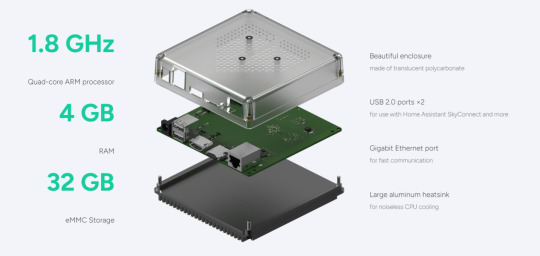
Source: screenshot from home-assistant.io
From the inside, a powerful 1.8 GHz quad-core CPU developed based on RK3566 SoC, which is from a Chinese fabless semiconductor company, to run applications smoothly and quickly. RK3566 SoC is a high-end SoC featuring Arm Cortex-A55 CPU and 1TOPs@INT8 NPU.
What makes it outstanding is 4 GB LPDDR4X of RAM and 32 GB eMMC flash drive of storage, this enables users to running Home Assistant on the device for a long time, and make it simple to get going without the need for manual setup or flashing a memory card from another PC. For individuals who wish to try Home Assistant without having to deal with the technical difficulties of setting up the storage themselves, this is highly beginner-friendly.
Interfaces of Home Assistant Green includes three status LEDs, a 12 V DC power supply (1 A), an optional battery, two USB 2.0 Type-A Host ports for use with Home Assistant SkyConnect and more, an HDMI output port solely for diagnostic purposes, one MicroSD slot for recovery purposes, and a Gigabit Ethernet port for the purpose of greater network reliability and fast communication.
Software
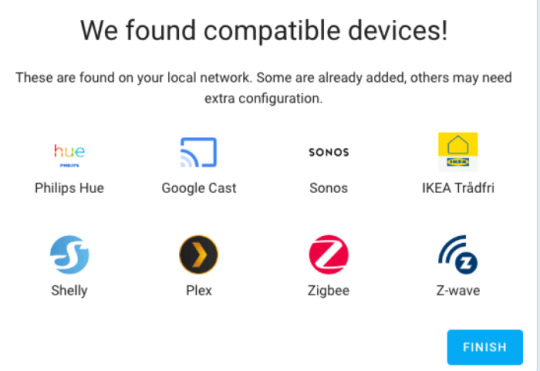
Source: screenshot from home-assistant.io
Home Assistant app is impressively potent, with more than 1000 built-in integrations catering to a diverse range of smart devices and online services. Additionally, a thriving community consistently contributes updates and expansions. In a simple word, everything in your home can be encompassed in Home Assistant.
You can also choose to make Home Assistant work together with you existing Apple HomeKit, Google Home, Samsung SmartThings, and Amazon Alexa. In other words, you can integrate Home Assistant into your existing smart home setup. The Home Assistant’s great compatibility ensures that the transition to using Home Assistant will not disrupt or require a sudden change in the way your household interacts with your smart devices.
As it’s not a typical Home Assistant Zigbee gateway, for users whose places have Zigbee device to connect, you may need extra configuration. For Zigbee, you can add a tiny blue Home Assistant SkyConnect to connect Zigbee devices. It is the easiest way to add Zigbee support to your Home Assistant instance and make it Matter-ready. A future firmware update will bring Thread support, allowing SkyConnect to power Matter and Zigbee networks at the same time. If you need to connect Z-Wave or Bluetooth devices, you also have the flexibility to utilize third-party USB devices to expand Z-Wave or Bluetooth functionality.
Build Privacy-focused Smart Home Easily
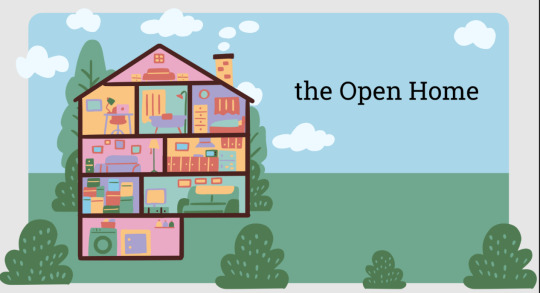
Home assistant proposed a “Open Home” vision centered on three core principles: privacy, choice and durability. Privacy means that the devices can operate locally by default, with an opt-in cloud connectivity, putting the control right in the hands of the users. Choice means that connected devices communicate via local APIs, free from vendor restrictions of limiting your access to your data or limiting the interoperability of your devices. Durability means that devices should be designed to provide long-lasting performance and ongoing support, without worry that the support is stopped or functions are crippled.
Easy-to-use for Beginners
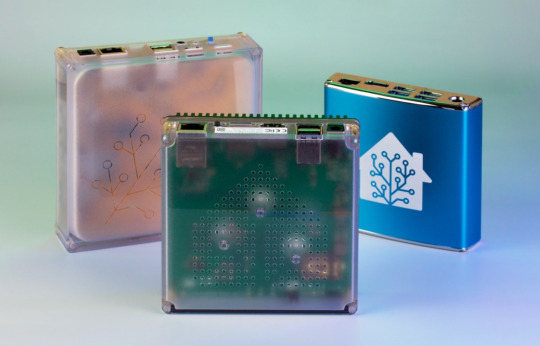
Home Assistant Yellow is a smart home hub with with a wide array of features smart home enthusiasts want, and is a good fit for advanced users. However, for those just embarking on their smart home journey, the full spectrum of Home Assistant Yellow's capabilities might be unnecessary and somewhat challenging to initiate.
Setting up Home Assistant Yellow requires users to procure their own Raspberry Pi or similar hardware, and due to global component shortages, the Home Assistant Yellow required Compute Module 4 has become more expensive and less accessible. Consequently, Home Assistant Yellow may no longer be an ideal choice for beginners.
As we previously mentioned, Home Assistant Green offers a remarkably straightforward setup process. To activate it, you need to follow just three simple steps: power, setup, and go!
Final Word
Home Assistant Green stands out as the easiest and most privacy-focused solution for effortless home automation. With its straightforward setup, this platform empowers you to seamlessly manage all your smart devices through a single system, ensuring that your data remains securely stored locally by default. Benefitting from the vibrant Home Assistant ecosystem, this board undergoes continuous enhancements through open-source contributions every month.
Feel free to harness its capabilities for a wide range of applications, including smart home control, home security, energy management, remote operation, and much more. The possibilities are virtually endless.
0 notes
Text
Bluetooth in Hospitals:How BLE AoA Help Streamline Hospital Asset and Personnel Management
Hospitals are usually large and complex institution organizations faces with ineffective running issues. The most typical one is to managing a large number of medical staff, patients, and equipment, especially in personnel scheduling, resource allocation and safety monitoring.
Challenges Faced by Traditional Hospitals
Inflexible personnel scheduling: In the hospital setting, it's crucial to schedule medical staff flexibly to accommodate varying departmental, ward, and work requirements. However, traditional personnel scheduling techniques frequently prove low-efficiency and prone to error.
Inefficient medical equipment management: Resource waste are frequently caused by the lack of information about the distribution and usage of medical equipment in a timely manner.
Security challenges in hospital environments: Lost equipment and missing patients are always possible security hazards inside the hospital. Obviously, traditional monitoring methods have their limitations and are unable to provide real-time perception and early warning.
Benefits of Using Bluetooth Positioning in Hospitals
The Bluetooth-based hospital personnel and equipment positioning solution represents an innovative approach to meeting the demands of modern smart hospital management. This solution enables real-time tracking and monitoring of staff and equipment within the hospital by harnessing advanced technologies such as BLE AoA positioning technology, wireless connectivity, and data analysis.

Source: bluetooth.com
Why Bluetooth in Hospitals?
Pervasive Role in Various Medical Wearables and Medical Equipment
Bluetooth technology has been extensively used in medical wearables such as fitness trackers, glucose monitors, pulse oximeters, and more. It has taken over the consumer electronic device market for years, and is able to integrate with many popular IoT operating systems including Android, Windows, iOS, etc., making BLE embedded applications functions optimally in devices using these OSs. Meanwhile, Bluetooth technology is progressively replacing wired alternatives in recovery rooms, operating rooms, and intensive care units (ICUs). Know more BLE advantages over Zigbee here.
Frequency Hopping to Mitigate Radio Interference
The stability of wireless radio-frequency technology may worry hospitals. Having too many devices broadcast data on heavily trafficked channels can produce radio interference and distorted signals, which may cause healthcare facilities to pause.
However, Bluetooth employs adaptive frequency hopping (AFH) to lessen such an effect in surroundings. BLE devices can use AFH to determine which channels are in use and employ hop sequencing to avoid accessing these occupied channels. Due to the significant reduction in radio impedance, Bluetooth packets are able to pass through even the difficult interference sources, making it is the perfect addition to any wireless infrastructure.
Low Energy Consumption to Prolong Device Battery Life
Bluetooth Low Energy (LE) is a technology marketed as Bluetooth Smart and integrated into version 4.0 of the Core Specification was completed in early 2010. It is designed for very low power operation, transmitting data over 40 channels in the 2.4GHz unlicensed ISM frequency band.
Bluetooth LE supports a variety of communication topologies, ranging from point-to-point to broadcast and mesh, making it possible to build dependable, extensive device networks. In order to meet the growing need for highly accurate indoor location services, Bluetooth LE is also commonly employed as a device positioning technology.
A wide range of medical devices like such as blood glucose monitors use BLE technology to improve patient condition monitoring and care. Thanks to the power efficiency of Bluetooth LE, these devices can operate for years on small, coin-cell batteries.
BLE technology is used in a wide variety of medical equipment, including blood glucose monitors, to enhance patient status monitoring and treatment by transmitting data via BLE gateways. These gadgets can run for years on tiny coin-cell batteries because of Bluetooth LE's power economy.
Large-Scale Device Networking to Enhance Healthcare Efficiency
Hospitals can quickly create large-scale device networks with BLE mesh technology and use the automated system to manage and keep an eye on tens, hundreds, or thousands of staff, patients and devices. This will aid healthcare facilities in reducing costs, improving patient care, and increasing operational effectiveness.
As an illustration, hospitals may think about deploying a BLE-based remote patient monitoring solution to track patients vital signs at any time, anyplace. Facilities may also track patients' whereabouts within hospitals, which could benefit emergency services by enabling nurses to locate lost patients more quickly.
How Does Bluetooth AoA Work to Help Optimize Hospital Management?
To enable Bluetooth Angle of Arrival (AoA) positioning within a medical facility, you first need to install Bluetooth AoA locators (some people also call them positioning base stations) on the ceiling or walls of the hospital building. These locators are capable of transmitting Bluetooth signals into the surrounding environment and receiving signals from Bluetooth-tagged devices.
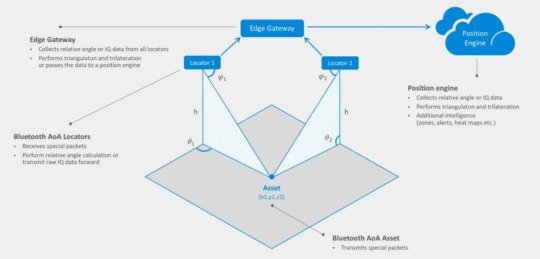
In the process of signal transmission between the locator and the Bluetooth tag, a critical technology comes into play, known as the Angle of Arrival (AoA) based on the Bluetooth 5.1 Direction Finding function. It is a kind of algorithm calculating the time difference received by different antennas.
That is, when the Bluetooth chip activates the carrier amplitude and phase transmission and reception values of the Bluetooth radio frequency end, the signal is calculated using the I/Q value (phase value) according to different antenna array designs. By analyzing the signals received at two distinct endpoints with varying orientations, the algorithm accurately determines the location of the transmitting endpoint.
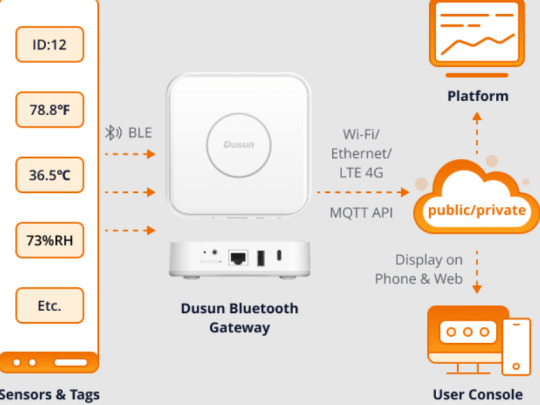
Hospital can also develop a specialized application for medical staff and install it on mobile devices, such as smartphones, tablets or handheld devices. With this app in place, hospital management staff gain the convenience of real-time monitoring and management capabilities accessible anytime and from anywhere.
Final Words
While Bluetooth Angle of Arrival (AoA) positioning has the qualities of high accuracy, high concurrency, low power consumption, low cost, and high interoperability, it is not flawless. Technically speaking, Bluetooth AoA is susceptible to signal reflection interference, antenna array errors, and the complexities stemming from environmental and antenna directional disturbances. On the other hand, the development time of Bluetooth AoA high-precision positioning is short, which strongly tests the technical strength of Bluetooth AoA positioning platform suppliers.
However, in the field of medical and health care, Bluetooth AoA positioning proves to be an invaluable solution for a range of scenarios, including hospital indoor navigation, medical and security personnel scheduling, high-value medical equipment tracking, managing special patient cases, and preventing maternal and infant abduction, etc. This technology has demonstrated its capacity to significantly enhance hospital management efficiency in these healthcare settings.
0 notes
Text
Pharmaceutical Cold Chain Monitoring:Maintaining Medicinal Excellence at Every Step
Pharma cold chain monitoringᅠregulates environmental factors for medications, including temperature, humidity, and light,ᅠduring the whole process from production to consumption.ᅠDrugs need to go through a series of transportation and storage proceduresᅠfrom the manufacturing facility to the hospital or retail pharmacy. Cold chain monitoring based on IoT plays an important role during the process.

Why Does the Pharmaceutical Cold Chain Need IoT Monitoring?
The pharmaceutical cold chain monitoring has stricter requirements for maintaining a certain temperature and humidity environment to ensure the quality of pharmaceuticals, compared with general food cold chain. Throughout the supply chain, warehousing, and shipping of some pharmaceutical items, temperature and humidity variations can have a significant impact on drug quality.
The deterioration caused by temperature changes directly affects the quality and curative effect of medicines. Raising the temperature is easy to volatilize and reduce the dosage, and lowering the temperature is easy to freeze and inactivate.
Meanwhille, according to Goog Storage and Distribution Practices for Drug Products: All drug products have storage requirements that may contain specific controls. The container used for transporting the drug product should be qualified on the basis of labeled conditions of the product as well as anticipated environmental conditions. Consideration should be made for seasonal temperature differences, transportation between hemispheres, and the routes and modes of transport. The type, size, location, and amount of the temperature stabilizers required to protect the product should be based on documented studies of specific distribution environments including domestic and international lanes, mode(s) of transport, duration, temperature, and other potential environmental exposures or sensitivities that may impact product quality.
Therefore, it has become a demand of more and more businesses and users to realize the whole process management and traceability of medical cold chain with the aid of IoT, in order to strengthen the monitoring of temperature and humidity and the data management of the entire process of medical cold chain.
What is IoT-based Medical Cold Chain Monitoring System?
The IoT pharmaceutical cold chain monitoringᅠis a system that employs sensors, network communications, cloud computing and other technologies to implement real-time monitoringᅠand control ofᅠpharmaceutical storage, transportation, etc. The system can continuously track the temperature, humidity, light, and other environmental factors affecting medications, alert when something is out of the ordinary, record it, and transfer the information to a cloud platform for storage and analysis.
Temperature and Humidity Monitoring
In a strict sense, cold chain logistics nowadays should be referred to as temperature-controlled logistics. The pharmaceutical cold chain monitoring system makes it possible to keep an eye on the conditions of pharmaceutical goods, particularly those that are susceptible to humidity and temperature during storage or transportation. Embedded sensors may collect and process data from any object, including a pallet and a medicine crate. Additionally, temperature data, ETAs, and historical temperature records may be provided through the IoT cold chain system. Furthermore, they may notify users when temperatures change, which helps businesses manage temperature-controlled goods more effectively.

Supply Chain Management
In addition to detecting temperature, the IoT pharmaceuticalᅠcold chain monitoring system may use real-time location tracking to guarantee the validity and safety of commodities. To prevent the items from being stolen, lost, or misplaced during transit, the location information of the goods may be traced in real time using GPS positioning and other technology. Location data may also be utilized to streamline logistics processes, boost productivity, and guarantee that items arrive at their destinations on schedule and accurately. Environmental factors for the items, such as temperature and humidity, may also be tracked in real time and changed as needed to maintain their efficacy and safety throughout transportation.
Architecture of IoT Pharmaceutical Cold Chain Monitoring System
The architecture of the Internet of Things medical cold chain monitoring system includes three parts: hardware equipment, software system and communication protocol.
IoT Hardware
For the storage, transportation, handover and other links of the pharmaceutical cold chain, the IoT hardware includes temperature and humidity sensors for monitoring the warehouse storage environment, temperature and humidity monitors for monitoring cold chain transportation vehicles, and tags installed on the incubator for monitoring the temperature inside the box label etc.
Software
The software system includes data acquisition, storage, analysis, visualization and other modules. The temperature and humidity monitoring dataᅠuploaded by various smart IoT devices are then presented in the form of a sizable visual supervisory screen, which showsᅠdata servingᅠas the foundation for the visual monitoring of the medical cold chain, including monitored temperature and humidity values, abnormal situation alerts, transportation process trajectories, door or box opening details, etc.
Communication Protocols
LoRa, Zigbee, etc., are communication protocols are utilized to gather data. LoRa is a low-power WAN communication protocol suitable for long-distance transmission, while Zigbee is a short-range wireless communication protocol suitable for small-scale connections.
Advantages of IoT Pharmaceutical Cold Chain Monitoring System
Medicine Quality Assurance: real-time monitoring of medicine storage and transportation environment ensures quality and safety of pharmaceutical goods as well as minimizes their damage and pollution during their storage and transit.
Reduce Costs: Drug damage and returns due to environmental variables may be decreased, and the cost and risk of the business can be decreased.
Improve Efficiency: By tracking and controlling the environment for drug storage and transportation, it is possible to optimize drug storage and transportation routes as well as the effectiveness and speed of the logistics process.
Increase Traceability: the whole process of drug manufacture, storage, transportation, and sales may be tracked through real-time monitoring and control of the environment.
Final Words
The Internet of Things medical cold chain monitoring system is an advanced management method that can provide more accurate, real-time and traceable management methods for the pharmaceutical industry. The medical cold chain monitoring system of the Internet of Things can be applied to scenarios such as drug storage and transportation, cold storage management, pharmaceutical retail, and medical waste treatment. Safety.
Pharmaceutical cold chain monitoringᅠoffers an innovative management technique that can offer the pharmaceutical business more precise, real-time, and traceable management approaches. It can be applied to cold storage facilities, pharmaceutical retail, and the treatment of medical waste, etc., to preserveᅠpotencyᅠand safeguardᅠpharmaceuticalᅠquality at every round of the supply chain.
Reference:
0 notes
Text
Redefine Asset Management by Using Bluetooth Gateways and Beacons
Bluetooth gateways and tags have developed into an effective and precise method of managing assets in today's fast-paced environment. With the aid of these technologies, businesses can manage and track assets in detail, knowing not only where they are but also how they are being used in real time. The emergence of this technology has upgraded asset management from simple record viewing to a new stage of regional positioning and remote monitoring.
As an illustration, consider the smart factory. With the intelligent transformation of the factory, all types of cutting-edge equipment are introduced into the factory park, even the workshop. Due to budget constraints or to increase equipment utilization, many workshops may share the same equipment. The typical issue is that after workshop A uses the equipment, it may be thrown in a specific corner. Each workshop frequently needs to hunt individually when workshop B needs to utilize the equipment since it is unsure of where the equipment is kept. Although these assets and equipment can boost the factory's production effectiveness, they also provide managerial challenges. If you stick with the old management style, it will not only lead to ineffective asset and equipment oversight, but it may also result in disputes over how to utilize equipment in departmental workshops.
How can Bluetooth Gateways and Tags Help?

Additionally, Bluetooth tags can be affixed to specificᅠpartsᅠof the product, such its packaging. The tag will continually transmit the tag number, device name, device type, and other identifying data to the nearby Bluetooth gateways. The identifying information of the tag also changes when the device is moved or used, therefore documenting the movement and usage of the object.
Factory managers may comprehend the distribution and use of equipment in real time and prevent situations where it is haphazardly put or cannot be discovered by combining the use of Bluetooth gateways and tags. Additionally, BLEᅠbeacon location trackingᅠtechnology may assist manufacturers in implementing remote equipment monitoring and management, increasing the effectiveness of equipment utilization and production.
Advantages of Using Bluetooth Gateways and Beacons for Asset Management
Real-time location tracking: Assets can have BLE tags installed to track their whereabouts in real time and send that information to base stations or cloud services. In order to prevent asset loss or theft, asset managers may now always know where their assets are.
Asset status monitoring: By attaching BLE sensors to assets, the state of assets, including temperature, humidity, pressure, etc., may be tracked. The data can then be sent to base stations or cloud servers. Asset managers are able to stay informed about the condition of their holdings and act quickly to prevent loss or harm.
Asset tracking and management:ᅠAsset tracking and management may be accomplished by attaching BLE tags or sensors to assets. Through computer software or mobile apps, asset managers may manage and dispatch assets as well as verify the location and status of assets at any time.
Automated inventory management: Automated inventory management may be accomplished by placing BLE base stations and tags in warehouses or warehouses. The BLE tag will automatically recognize and communicate the asset information to the base station or cloud server when a new asset enters the warehouse. Asset managers can monitor inventory levels in this way to prevent overstocking or understocking.
Advantages of Using Bluetooth Gateways in Asset Management
With the help of the new Bluetooth IoT solution, assets and equipment can be monitored remotely, managed regionally, and positioned to ensure asset traceability while in use, increase utilization rates, and maximize revenue.
Easy Device Integration: Users may read and analyze the information on all Bluetooth tags and observe the current position of all assets and devices that have Bluetooth tags by connecting asset management software or platforms with Bluetooth gateways.
Automatic Early early warning: The system will automatically warn as soon as assets or equipment leave the monitoring region, which is helpful for asset recovery.
Low cost: Bluetooth tags are inexpensive and reusable in comparison to other monitoring technologies, and the entire solution may be deployed with a few number of gateways.
Working Principle of Bluetooth-enabled Asset Management
Due to its tremendous benefits of low power consumption and low cost to tackle practical challenges, Bluetooth BLE has been included into scene applications by an increasing number of solution vendors.

Bluetooth-enabled location tracking is based on the RSSI (Received Signal Strength Indication) three-point positioning principle. It is important to install at least one Bluetooth gateway in the existing situation when implementing Bluetooth location tracking solutions. When the broadcast signal of the terminal device enters the scanning range of a certain gateway, the presence of the person or object can be confirmed.
Final words:
The importance of tracking vital assets increases with facility size. The use of Bluetooth gateways and tags in asset management has substantially increased theᅠproductivity and increased the accuracy of work. This new technology not only permits remote monitoring, which is obviously very helpful in preventing asset loss and lowering management expenses, but also allows usersᅠto understand the position and status of assets in real time. we expect this technology to develop further and bring more convenience and benefits to asset management.
0 notes
Text
The Future is Connected: 5 Top IoT Trends to Watch in 2023
IoT is transforming how we live and work as a result of the quick advancement of IoT technology. IoT is altering not only the way we live, but also the way we think in this linked world. The Internet of Things has been applied everywhere, from smart cities to smart homes, smart transportation to smart healthcare, etc. This article will introduce 5 must-see IoT trendsᅠthat will help us better grasp this IoT world of limitless potential.
Trend 1: Convergence of AI and IoT
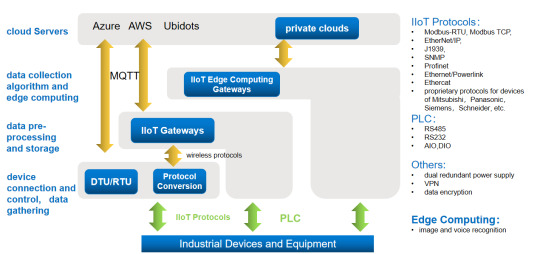
By utilizing sophisticated algorithms and machine learning techniques, devices like IoT Edge gateway can analyze and interpret data in real time, make informed decisions and take autonomous actions. The combination of AI and IoT enables IoT devices to adapt to changing environments, optimize their operations and provide users with a personalized experience. AI can enhance IoT devicesin the following ways:
Sophisticated Data Analysis
AI algorithms can process and analyze the massive amounts of data generated by IoT. IoT devices can identify trends, abnormalities, and patterns in data by leveraging methods like machine learning and deep learning. This analysis provides valuable insights for optimizing processes, predictive maintenance, and detecting potential risks or fanalysis.
Intelligent Automation
AI enables IoT devices to intelligently automate tasks and processes. IoT devicesᅠmay automate routine tasks, change settings, and reduce energy usage by learning from past data and user behavior. For instance, a smart thermostat may learn how the inhabitants want their temperature and regulate the heating or cooling appropriately, saving energy and enhancing comfort.
Real-time Decision
IoT devices can use artificial intelligence to make choices in real time based on the data they gather and examine. This makes it possible to respond quickly to changing conditions or events.ᅠFor instance, AI algorithms may evaluate patterns of power consumption in smart grid systems and modify power distribution to guarantee effective use and avoid blackouts.
Trend 2: 5G promotes the advancement of IoT
The Internet of Things is expanding quickly, and as its many sensors and gadgets go online, they will gather enormous volumes of data. 5G is the fifth generation of mobile communication technology. High speed, low latency, and enormous capacity are its key characteristics.ᅠIn IoT applications, it can provide faster data transmission speed and more stable and efficient network support.
The Internet of Things will be able to achieve higher transmission speeds and reduced latency when 5G technology is widely adopted, which will have a significant influence on many Internet of Things applications. Some applications, such real-time monitoring, remote control, smart manufacturing, etc., which are now constrained by network speed and latency, will be able to achieve more efficient and quicker data transfer and processing, increasing efficiency and lowering costs.
In addition, the large bandwidth capability of 5G technology will make it easier to transmit high-definition video, which is very beneficial for applications in smart cities, smart transportation and other fields. For example, to accomplish more accurate and real-time road condition analysis, enhance traffic flow, and lessen congestion in intelligent transportation, the data on road condition acquired by high-speed cameras may be communicated in real-time to the central control system.
Applications like self-driving vehicles will benefit greatly from 5G's reduced latency characteristics. Fast and low-latency data transfer is essential in self-driving automobiles so that the vehicle can gather knowledge about its surroundings in time for immediate decision-making and action.
Trend 3: Wide uses of Sensors
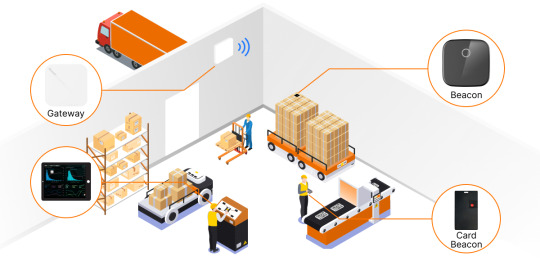
Sensors can be used in the medical industry to track patients' physiological parameters, such as their heart rate, blood pressure, blood sugar, etc., enabling remote monitoring and prompt patient intervention. In order to achieve intelligent traffic management and optimization, sensors may be utilized in the transportation sector to monitor things like road conditions, vehicle and pedestrian movement, etc. The use of sensors in the industrial sector can enable smart production and preventive maintenance by tracking the operational conditions, temperature, pressure, etc. of machinery and equipment. Sensors may be used in the smart home to monitor how much energy is consumed by each appliance, and the smart gatewayᅠcan evaluate this data and automatically change the power consumption mode of these appliances to save energy.
What’s more, the wide application of sensors will bring more data, which will provide more opportunities for data analysis and technological innovation. By combining artificial intelligence and big data analysis, we can better understand and predict various scenarios, so as to formulate more accurate strategies and decisions.
Trend 4: The Rise in Popularity of Smart Homes
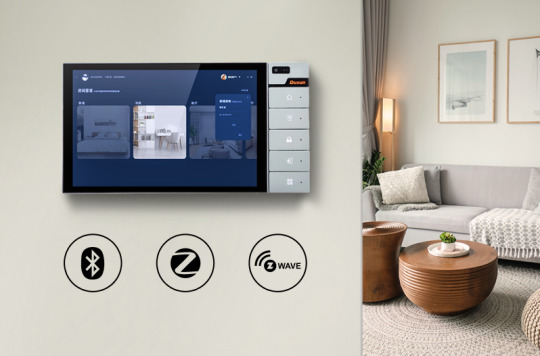
Remote Control
First, IoT technology enables smart home gadget remote control. Users may operate electrical appliances, lighting, security systems, and other things at home whenever and wherever they want using mobile phone applications or other smart devices. For instance, users can change the temperature before they leave the house, switch on the door locks, and turn on the heating before they go home.
Automated Operation
Second, smart device automation is a reality thanks to Internet of Things technologies. Smart home appliances are able to react automatically to user actions or events in the house thanks to predefined rules or clever algorithms. For instance, the smart door lock might be set to activate immediately when the user opens the door, the light could be set to the proper brightness and color temperature, and the TV could be set to automatically switch on and start playing the user's preferred show.
Security Enhancement
The security of the home can also be enhanced by IoT technology. Smart home gadgets, such as door and window opening and shutting, smoke alarms, etc., may be linked to the security system to track the security status of the house in real time. These devices can simultaneously evaluate and forecast user behavior patterns using big data in order to send out alarms on time or take appropriate action in anomalous circumstances.
Data Sharing
Last but not least, IoT technology can facilitate the networking and sharing of home appliances. Smart home appliances may exchange data and resources with other smart devices to provide more sophisticated services. Voice assistant, for instance, may be linked to other smart devices to provide voice control and intelligent question-and-answer functionality, offering customers additional practical life services.
Trend 5: The Explosive Growth of Wearable Devices
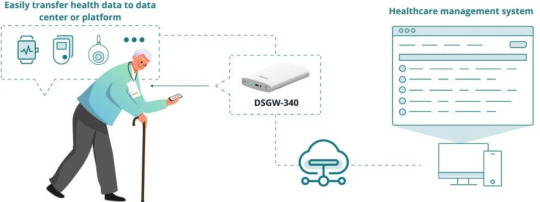
More Personalized Services
As technology continues to improve and innovate, IoT wearable devices will be better equipped to track users' physiological and activity data, enabling more individualized and tailored services for consumers. Wearable technology, for instance, can offer more precise health management and exercise suggestions depending on the user's health state and activity data.
More Advanced User Interaction
As artificial intelligence technology advances, wearable IoT devices will be able to communicate with people in a more sophisticated way. Users can more easily operate other smart devices with wearable technology or access more sophisticated services, for instance, through voice recognition, gesture recognition, and other technologies.
More Efficient Data Analysis
As big data technology advances, the information gathered by IoT wearable devices will be processed and used more effectively. We can better understand consumer demands and behavior patterns through data mining and analysis, enabling us to offer services that are more precise.
Richer Application Scenarios
Wearable technology will be used in more situations as it continues to advance and innovate, including those involving health care, sports, security, education, etc. For instance, remote education using smart glasses, remote medical care through smart watches, etc.
Final Words
IoT is generally the way of the future, and it is revolutionizing both our personal and professional lives.We have reason to anticipate that the Internet of Things will offer more shocks and improvements as science and technology continue to advance, improving the intelligence, convenience, and beauty of our lives.
0 notes
Text
Redefine Asset Management by Using Bluetooth Gateways and Beacons
Bluetooth gateways and tags have developed into an effective and precise method of managing assets in today's fast-paced environment. With the aid of these technologies, businesses can manage and track assets in detail, knowing not only where they are but also how they are being used in real time. The emergence of this technology has upgraded asset management from simple record viewing to a new stage of regional positioning and remote monitoring.
As an illustration, consider the smart factory. With the intelligent transformation of the factory, all types of cutting-edge equipment are introduced into the factory park, even the workshop. Due to budget constraints or to increase equipment utilization, many workshops may share the same equipment. The typical issue is that after workshop A uses the equipment, it may be thrown in a specific corner. Each workshop frequently needs to hunt individually when workshop B needs to utilize the equipment since it is unsure of where the equipment is kept. Although these assets and equipment can boost the factory's production effectiveness, they also provide managerial challenges. If you stick with the old management style, it will not only lead to ineffective asset and equipment oversight, but it may also result in disputes over how to utilize equipment in departmental workshops.
How can Bluetooth Gateways and Tags Help?

Additionally, Bluetooth tags can be affixed to specific parts of the product, such its packaging. The tag will continually transmit the tag number, device name, device type, and other identifying data to the nearby Bluetooth gateways. The identifying information of the tag also changes when the device is moved or used, therefore documenting the movement and usage of the object.
Factory managers may comprehend the distribution and use of equipment in real time and prevent situations where it is haphazardly put or cannot be discovered by combining the use of Bluetooth gateways and tags. Additionally, BLEᅠbeacon location trackingᅠtechnology may assist manufacturers in implementing remote equipment monitoring and management, increasing the effectiveness of equipment utilization and production.
Advantages of Using Bluetooth Gateways and Beacons for Asset Management
Real-time location tracking: Assets can have BLE tags installed to track their whereabouts in real time and send that information to base stations or cloud services. In order to prevent asset loss or theft, asset managers may now always know where their assets are.
Asset status monitoring: By attaching BLE sensors to assets, the state of assets, including temperature, humidity, pressure, etc., may be tracked. The data can then be sent to base stations or cloud servers. Asset managers are able to stay informed about the condition of their holdings and act quickly to prevent loss or harm.
Asset tracking and management:ᅠAsset tracking and management may be accomplished by attaching BLE tags or sensors to assets. Through computer software or mobile apps, asset managers may manage and dispatch assets as well as verify the location and status of assets at any time.
Automated inventory management: Automated inventory management may be accomplished by placing BLE base stations and tags in warehouses or warehouses. The BLE tag will automatically recognize and communicate the asset information to the base station or cloud server when a new asset enters the warehouse. Asset managers can monitor inventory levels in this way to prevent overstocking or understocking.
Advantages of Using Bluetooth Gateways in Asset Management
With the help of the new Bluetooth IoT solution, assets and equipment can be monitored remotely, managed regionally, and positioned to ensure asset traceability while in use, increase utilization rates, and maximize revenue.
Easy DeviceᅠIntegration: Users may read and analyze the information on all Bluetooth tags and observe the current position of all assets and devices that have Bluetooth tags by connecting asset management software or platforms with Bluetooth gateways.
AutomaticᅠEarly early warning:ᅠThe system will automatically warn as soon as assets or equipment leave the monitoring region, which is helpful for asset recovery.
Low cost: Bluetooth tags are inexpensive and reusable in comparison to other monitoring technologies, and the entire solution may be deployed with a few number of gateways.
Working Principle of Bluetooth-enabled Asset Management
Due to its tremendous benefits of low power consumption and low cost to tackle practical challenges, Bluetooth BLE has been included into scene applications by an increasing number of solution vendors.

Bluetooth-enabled location tracking is based on the RSSI (Received Signal Strength Indication) three-point positioning principle. It is important to install at least one Bluetooth gateway in the existing situation when implementing Bluetooth location tracking solutions. When the broadcast signal of the terminal device enters the scanning range of a certain gateway, the presence of the person or object can be confirmed.
Final words:
The importance of tracking vital assets increases with facility size. The use of Bluetooth gateways and tags in asset management has substantially increased the productivity and increased the accuracy of work. This new technology not only permits remote monitoring, which is obviously very helpful in preventing asset loss and lowering management expenses, but also allows users to understand the position and status of assets in real time. we expect this technology to develop further and bring more convenience and benefits to asset management.
0 notes
Text
Industrial IoT Gateways and PLCs: Where OT Meets IIoT
PLCs (programmable logic controllers), which serve as the brain of factory floor automation systems and offer dependable and adaptable control methods for industrial control operations, have been at the center of these systems for the past few decades. However, new Industrial Internet of Things (IIoT) technologies are offering more sophisticated functionalities and effective solutions as a result of the rapid growth of IIoT technologies.
Industrial IoT gatewayᅠis a device based on Internet of Things technology, which can connect multiple sensors, instruments, controllers and other devices to realize real-time monitoring and management of various parameters in the industrial environment. More significantly, the industrial Internet of Things gateway may link OT and IIoT, facilitate information flow, and encourage equipment collaboration, all of which support the advancement of industrial automation.
This article will explore the synergy of industrial IoT gateways and PLCs in automated production, and and how they might work together to increase production efficiency, lower costs, and improve product quality.
What is PLC?
PLC, short for Programmable Logic Controller, is a device specially used for industrial automation control. In order to satisfy the demands of industrial production, it uses computer control technology and programming to accomplish real-time control, measurement, and execution duties. PLCs are essential for controlling complex industrial applications' production processes and enhancing output quality and efficiency.
Although PLCs can take on a variety of shapes and forms, their fundamental function—to fulfill the automatic control of industrial production—remains the same. PLC is used extensively throughout a range of industries, including manufacturing, electric power, transportation, mining, etc. It has grown to be an essential component of industrial automation.
PLC and the IIoT
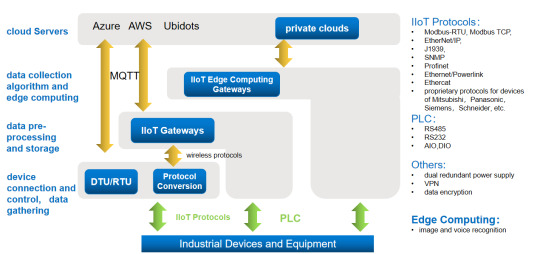
PLC is a well-known type of industrial control system, with data contact usually takes place within the local area network, and system communication typically takes place in a workshop or factory. However, a greater variety of data exchange and remote management can be accomplished by integrating the PLC control system into the Industrial Internet of Things, further advancing the industrial automation process.
For instance, real-time production line running status can be obtained through remote PLC monitoring through the Internet. This allows for the early detection and resolution of issues, increasing the effectiveness and caliber of production. Additionally, the production process can be optimized and maintained in advance through data analysis and wise decision-making, which lowers production costs and resource usage even more.
PLC and an IIoT gateway
PLCs and IoT gateways both have significant contributions to make to industrial automation, but they operate in distinct ways.
PLC
PLCs are devices with some computer-like properties that are specifically made to control industrial equipment. They are capable of doing tasks like counting, timing, arithmetic computations, and sequence control. In order to achieve accurate control of the industrial machine, it modulates the output signal using the input signal.
Industrial IoT gateway
What is an industrial gateway?ᅠAn industrial IoT gateway, on the other hand, is a kind of IoT device that connects PLCs, sensors, instruments, industrial equipment, and other intelligent hardware with features including device networking, data collecting, and edge computing. It can simultaneously transfer the gathered data to local or cloud storage programs. In order to implement device interconnection, the IoT gateway can also be utilized as a connection point between the cloud platform and PLC controllers, sensors, or other industrial equipment.
The Convergence

In order to realize PLC data on the cloud, Dusun IoT's DSGW-081 Modbus RS485 CAN Bus I/O converter (WiFi/LTE 4G/Ethernet) has rich industrial control protocols and a variety of data interfaces embedded within it. This makes it compatible with more than 95% of common PLC devices currently available (Siemens, Mitsubishi, Omron, Schneider, Delta, AB, Beckhoff, Xinjie, Inovance, Panasonic, etc.). It is an effective and dependable option that promotes the growth of industrial automation.
IoT-based Remote Monitoring and Operation Solution Via IIoT Gateways And PLCs
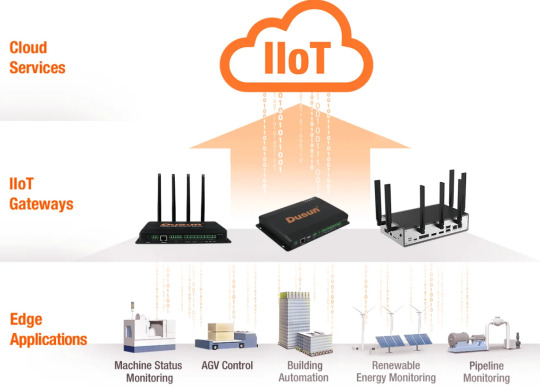
Remote monitoring solution by IIoT gateway and PLCs are mainly composed of two major components:
Industrial gateways: interface with PLC or collector, gather data from industrial equipment, enable remote monitoring and intelligent control are the two parts of the solution.
Cloud platform for IIoT applications: stores, processes, and analyzes data that smart gateways upload to various locations; it can be displayed on a big screen to realize equipment management, maintenance work order management, remote operation and maintenance, big data analysis, etc.
In general, the industrial gateway may typically connect to and collect data from PLCs downlink, and transport data to clouds uplink to enable remote equipment administration and debugging.
Final Words
The Industrial Internet of Things has grown to be a significant force in the promotion of industrial automation as a result of the ongoing development of technology. In many industries, including equipment production, sewage treatment, animal husbandry, HVAC, refrigeration, transportation, etc., professional industrial IoT solutions are employed extensively. These technologies significantly increase equipment efficiency and reliability by enabling remote monitoring and administration of industrial equipment using PLC technology.
The Industrial Internet of Things will have to deal with more difficult and tough jobs in the future. It will increasingly rely on data analysis and artificial intelligence technology as the digital age progresses in order to achieve more intelligent and adaptive operation, maintenance, and management. Additionally, to respond to changing industrial surroundings and equipment, IIoT will need more adaptable and scalable solutions as industrial equipment keeps getting upgraded.
1 note
·
View note